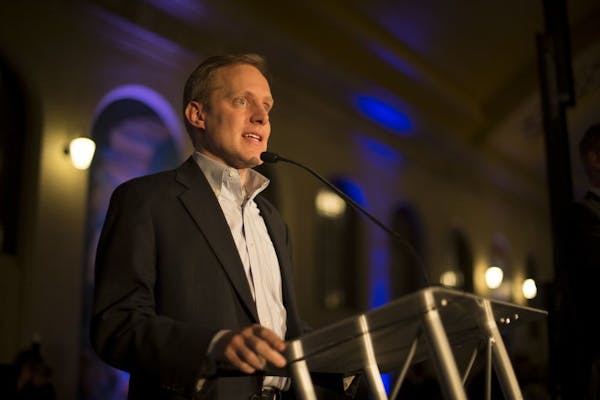One month before Election Day, more Minnesotans are getting a head start on voting than ever before — tripling the number of early absentee voting requests from the last election.
By Oct. 6, about two weeks after early voting opened across the state, elections officials had mailed or handed out more than 150,000 ballots, up from about 51,200 ballots at the same time in the run-up to the 2014 election.
Turnout and voter enthusiasm are always higher in presidential election cycles, but this year's early voting trends also show a nearly twofold increase over the number of absentee ballots cast by this time in the 2012 presidential election.
With more ballots arriving at election offices every day, Minnesota is part of a broader, national trend that has more states offering up the chance to vote early and larger numbers of voters looking to get a head start.
Minnesota's early voting numbers have been buoyed by a 2014 law change that allows voters to cast an absentee ballot without needing an excuse, like being out of town on Election Day. But Secretary of State Steve Simon said he thinks voters here have also caught on to the convenience of avoiding long lines on Election Day — and expects others around the country are doing the same.
"I would imagine if they're anything like Minnesota that people [in other states] will come to embrace voting on a day other than Election Day as something that fits their lives," he said. "In Minnesota, I think we've seen people that people have taken to this option quite a bit. I think they will more and more."
Across the country, 34 states and Washington, D.C., have now approved "no-excuse" early voting. That includes Wisconsin, where early voting got a staggered start, opening Sept. 26 in some cities, but later in others. Early voting opened in Iowa on Sept. 29, and in both North Dakota and South Dakota on Sept. 23.
Both parties are making a huge push nationwide to encourage residents to vote early as a way to bank huge numbers of votes before Election Day. Democratic presidential nominee Hillary Clinton has been particularly aggressive in battleground states like Florida, North Carolina and Nevada, where those early votes could be critical.
Early voting opened in Minnesota on Sept. 23, offering voters a chance to either request an absentee ballot by mail or to drop in at an early voting center in their city. In a few communities, which have opted to hold elections exclusively by mail, ballots are automatically mailed to voters. Adding those jurisdictions, the state had already sent out nearly 209,200 ballots by Oct. 6.
Of that total, 46,467 ballots had been returned to election offices, either by mail or in person at early voting sites. Once ballots are back in the hands of elections officials, the ballot envelopes are examined to ensure they've been properly completed and then the sealed ballots are left untouched until seven days before the election. At that point, officials can start feeding them into the vote-counting machines, but the state can't compile totals until after the polls close Nov. 8.
"Nothing can be released, not even internally, until one second after 8 o'clock on Tuesday of Election Day," Simon said. "So there's no running total."
The votes cast so far amount to a small percentage of the state's total number of voters; as of June, there were about 3.2 million people registered.
Still, the early votes can provide critical information for political parties headed into the crucial last weeks of their candidate's campaigns. Records listing who has voted — with names, addresses and voting records — can be obtained through the state to be used for political purposes. That means that parties can shift their resources and stop making phone calls or sending out mailings to people who have already cast their ballots. Or they can shift their focus to people who haven't voted, particularly if they don't appear to always vote along party lines.
Keith Downey, chairman of the Republican Party of Minnesota, said parties' use of that data has become more sophisticated as early voting has increased.
"As you gain information about who is voting early you can gain some information about who is energized and who isn't, and you can adapt your field plan," he said.
Downey said big increases in voter turnout for presidential elections had typically benefited Democrats, though he said Republicans rely on more consistent numbers of voters going to the polls.
Minnesota DFL Chairman Ken Martin said early voting records obtained by his party show that about 65 percent of the voters who have cast ballots so far are Democrats, a trend he expects will continue.
"The idea out there that people are not enthusiastic about getting out there in this election has clearly not held true with early voting," he said.
Martin said workers and volunteers in DFL offices around the state, combined with early voting rallies that began on the first day polls opened, has helped encourage voters who are sometimes reluctant to turn out on Election Day. In the past two weeks, the DFL has also joined with the Clinton campaign to host a series of events headlined by high-profile speakers, including former Democratic presidential candidate Bernie Sanders; Clinton's daughter, Chelsea Clinton, and feminist activist Gloria Steinem, who appeared at two Minneapolis events Friday.
Chelsea Clinton will return to Minnesota on Monday, this time heading to Rochester to urge residents to vote early.
Erin Golden • 612-673-4790
